Cam and I have spent years preparing for gap year. Although we’re quite happy with what we’ve brought, assembling our bags has been anything but a linear process. In this series, I want to examine how we decided what to bring on the road. Today, let’s discuss a topic near and dear to our hearts: clothes! How did we decide what to wear for a whole year?
Starting point
In general, Cam is a much more strategic packer than me, at the cost of taking a long time to pack. To her credit, it’s much harder to pack for women than men on average, given how precisely outfits need to match activities and occasions. My general packing style before all of this was to see how many of my favorite clothes fit into my largest suit case. “I like having options,” I’d always say to an exasperated Camille, who would pack a much smaller bag of precisely scheduled clothing. At least this takes little time to pack!
Cam made her first packing lists on our honeymoon in 2022. In the back of her mind, she’s probably been thinking about this scenario for even longer. I wasn’t worried about packing for the longest time, until six months or so before the start of our trip. I started searching on the internet about packing a bag. I had a big wakeup call.
Goals & Constraints
A daunting yet vitalizing goal for Camille and I was to be dressed as well as possible during our travels. We lamented the idea of looking like we’re camping in another person’s home on our trip. Dressing well, to us, feels like a matter of respect. We knew it would be difficult to look appropriate for a wide range of social contexts, activities, and weather conditions, but it felt like a worthy, stimulating challenge
Beyond the overall goal to look good, Camille developed a great set of overall criteria for our wardrobes:
Able to combine every top/bottom/jacket/shoe
Warm layers should be wearable together
Able to machine wash and dry, line dry quickly
Doesn’t get stinky/can wear multiple times
Can handle changes in body/weight gain or loss
There are a few natural limits to what we could bring. For starters, we’re limited by what fits into a bag. Bag choice is a story for another time (part 2 is in the works!). We aimed to pack about a weeks worth of outfits – a sound laundry interval.
In addition, we preferred to buy as many of our clothes in advance. We’ve heard of folks who pack little and buy things as needed, picking up clothes in regard to the season and geography. While this is cool, we found it unsuitable for us: First, it seems too wasteful for our taste; we’d like to minimize our overall footprint, or at least consume mindfully. We’d rather be certain that we love each article we’re planning on carring around, and that’s best realized with plenty of time. Second, it seems easier to fill gaps in one’s wardrobe with advance planning (e.g. it’s hard to find a decent packable puffy jacket on the road). We’d also like to know if everything will fit in our bag up front. Last, advanced planning is way more budget friendly. We often would research items and wait to buy them on sale, for example. There are a few notable exceptions where we’d buy things on the trip (read: accessories), but nothing that we can’t anticipate.
All of this makes for a solid constraint optimization problem. Beyond merely “solving the equation”, we had one more implicit goal: we really wanted to like the clothes we’d bring.
Clothes are an intimate affair. I have so much affection for specific garments. There’s little that can brighten my day more than a compliment about something I’m wearing from a stranger. There are shirts or jackets that I find myself reaching for over and over again, or save for special occasions, or keep in my closet because I like the idea of them.
Amid these practical matters, there was a real opportunity for us to be delighted in our dress.
Heuristics for Building a Wardrobe
With these goals stated up front, Camille and I brainstormed an approach for how we would go about building our wardrobe. We collected bits of advice for ourselves, heuristics found from a combination of research and reflection. Here is a list of recommendations, mostly for ourselves but generally applicable, on how to choose clothing for extended travel.
1. Collect data on what you wear
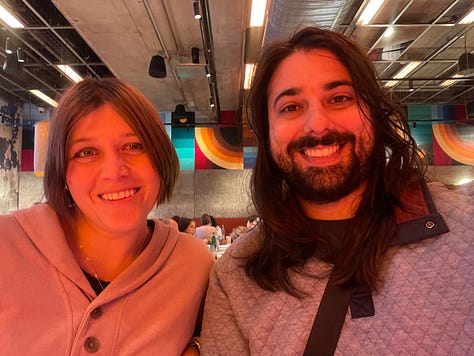
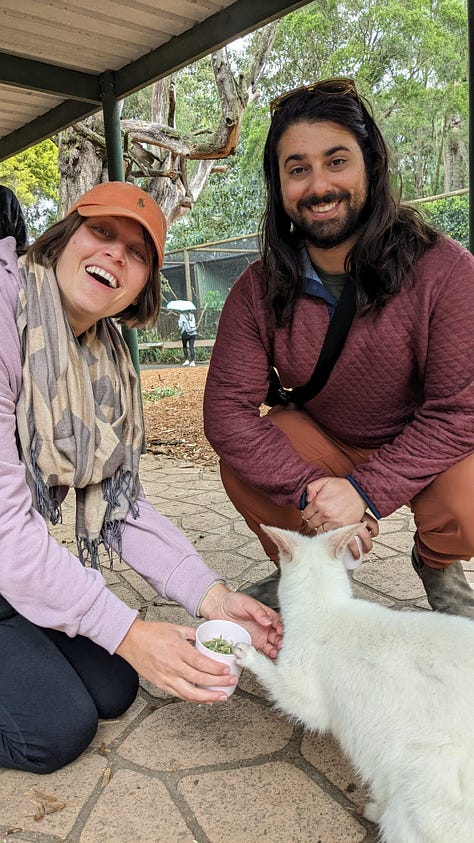
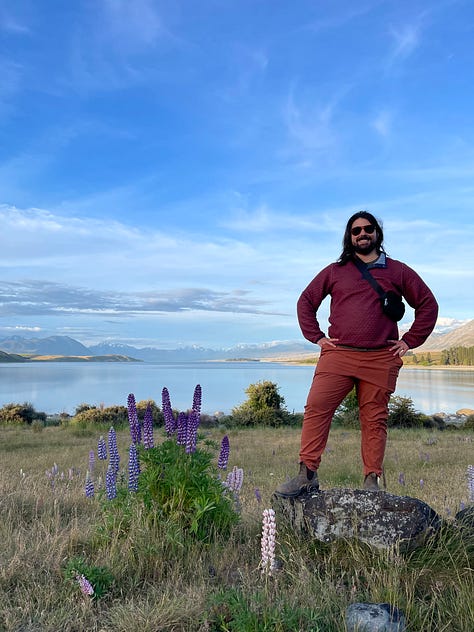
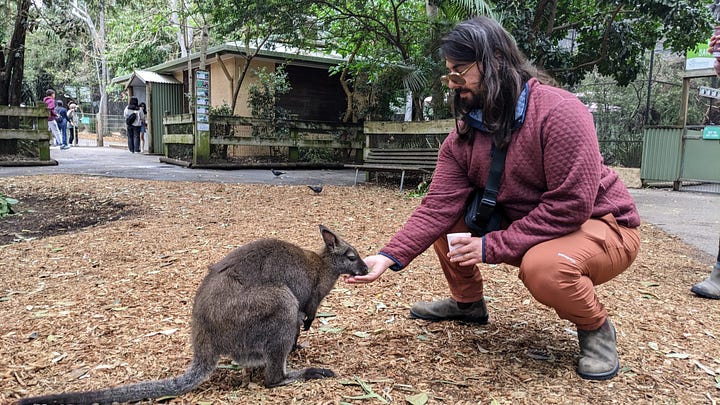

It stands to reason that the clothes you’d like to spend a year wearing would resemble the clothes that you reach for the most. To get some idea of what your favorite garments actually are, consider collecting data on what you wear. Camille did this by digitizing her closet over years. She’s used a few apps for this; her favorite right now is called Stylebook (it’s really well designed). I started digitizing my closet with this app in prep for gap year whenever I would put away laundry.
If digitization is too extreme or too much effort (ie* you’re not a psychopath), there’s a good lo-fi alternative: you can turn your closet into a least-recently-used cache. The process is simple: Put away the clothes that you actually wear on one side of the drawer or closet rod. Over time, you’ll naturally “sort” the clothes that you wear from the ones that you don’t.
For hung clothes, here’s similar method: Up front, aligned all the hangers facing one direction. Then, as you put away clothes, hang them in the opposite direction to tell what you actually wear.
Why collect information about what you wear? Well, it will make it easier to identify what to shop. From this data, you can look for travel-equivalent versions (e.g. a quick dry version of your favorite shirt, a red version of your favorite sweater, etc.).
2. Find principles for your sense of style
The best advice I’ve heard on how to dress comes from this interview in Articles of Interest (if you like fashion, I highly recommend reading this!):
Summary: Most of your closets should be basics, i.e. things that you can wear all seasons or every day. Surprisingly, basics shouldn’t be bland! They should have a point of view, specifically, of your personal style. Work to define three words that describe your sense of style (e.g. chill, modern and classic) – and don’t let anyone else define what these are, they should come from you alone!
After I first listened to this podcast and looked at my closet, I noticed that my basics were actually quite loud: they usually included things with bright colors and abstract patterns. These are what I always reached for!
Amy Smilovic’s advice in the podcast was to define your style words up front, after reflecting deeply about yourself. I had a hard time doing this — especially for putting my style into words. In my case, I assembled most of what I actually brought on gap year without knowing the words, but having a specific point of view (that I couldn’t quite describe). It wasn’t until I had a few friends over and showed them my travel clothes that we came across my style words: California Jones! (like, a Californian Indiana Jones 🙂 — thanks Emma!).
3. You probably will have more down time than you’re expecting. Pack accordingly.
For a while, I kept making space for nights out on the town, with fond visions of a bon vivant lifestyle. The reality of travel, in our experience, is a lot of sitting in hostel common rooms and airport lobbies. Like, what will you be wearing when recovering from a cold amid frigid AC in Bali? I won’t belabor this point; I’m just glad I apportioned space for sweats.
4. Take the time to test out your wardrobe
In theory, there is no difference between theory and practice. In practice, there is. — Richard Feynman
A lot of clothing seems perfect in theory. The only way to know is to test them out. This helps if you give yourself ample time to plan. We had a lot of lead time to prepare, with many smaller trips along the way to test out our bags (and ideas).
Everything is theoretical until you actually have to fit your packing list inside a bag and lug it around. On several occasions, I found that I was going to take too much, and had to (emotionally) process what to leave behind.
In addition to testing full bags, it’s really worthwhile to try on the outfits that will make it into the bag. Mind’s eyes are overrated. Remembering how a garment looks is not as good as seeing. Trying on garments — and their combination with other articles — is the best way to ensure that they’re worth packing. The idiosyncrasies of color combination and fit are only fully known when clothes are on your body. Although a cumbersome process, memory alone can lead you astray.
Last, it’s in your favor to start planning what to pack early. More time affords you the gift of more information. In other words, be more like Camille and less like me 😉.
Our Test: A North America Tour The summer before gap year, Camille and I embarked on a five week trip around the US. We worked throughout the trip and took days off here and there. While it was a blast, it was also an important test for our year long trip.
Our itinerary ranged widely in type of occasion and range of temperature (hot days in the desert and cold nights in the mountains). We wanted to be dressed right for a day walking around LA, a night on the town in Manhattan, and a weekend camping trip in Wyoming.
On this trip, I got a much better idea of what types of garments to bring. For example, long sleeve button down shirts are useful for reacting to temperature changes throughout the day. Or, that I could really use a fleece layer. I also learned that technical materials and linen are favored by travelers for a reason. Jeans, much to my disappointment, don’t fit the bill. I also had to reckon with starting from square one on what shoes to bring! I owned nothing suitable for long-term travel. All this said, I was really glad to have brought one formal cotton shirt for special occasions.
While in Wyoming, I bought a hat. I got the brown, crushable wool Stetson at the cowboy store in Pinedale. It was the first hat that I put on my head — I instantly fell in love with it. Seldom a day passes where I wear the hat and don’t receive a compliment. This was also a good lesson to make space for these kinds of precious souvenirs you can only find on the road.
What we brought on Gap Year!
Without further ado, here are the specific garments we brought on gap year!
Al
Maroon Modern Times beanie*
Dark brown, brimmed hat (the Stetson)*
2 pairs polarized sunglasses
8 pairs of ExOfficio underwear
1 pair of long underwear
6 pairs of Darn Tough socks (two short, the rest long)
3 pairs Vuori shorts (a technical material; these double as swim shorts)
2 pairs of pants (black Vuori slacks, a pair of orange Patagonia joggers)
2 t-shirts (one green, wool Patagonia shirt; one blue, synthetic shirt)
1 linen short sleeve button down shirt
3 long sleeve button down shirts
A pair of brown sweats
A reversible fleece sweater
A wool V neck sweater
A Patagonia micropuff (can be stuffed into its own pocket).
A black rain jacket
Green Teva sandals
Black Lems walking shoes
Brown Blundstone boots
*I have lost these items since the start of the trip.
Cam
2 dresses: one tank dress, one reversible cap-sleeve with pockets
1 wrap skirt
4 pants: one brown trouser, one black trouser, sweats, hiking pants
1 long underwear bottom (can also be worn as leggings)
3 t-shirts: yellow fitted, black fitted, loose black
1 black muscle tank
Bra tops: blue, rust, green, black
Long sleeve shirts: wool, lightweight, oversized linen
Sorel Chelsea boots
Lems walking shoes
Teva sandals
3 shorts: lounge shorts, bike shorts with pockets, linen shorts
2 sweaters: hemp/fleece blend, wool pullover
Patagonia micropuff
Rain jacket, rain pants
Swimsuits: one piece, two bikini bottoms, one bikini top
Underwear, bras, stockings, slip shorts
Socks: 2 shorties, 2 ankle, 2 crew
Hats: beanie, baseball cap, wide brimmed sun hat, wool cloche
Scarves: three neck scarves, one warm, doubles as a sarong
Jewelry, Fitbit
Thanks for reading! Stay tuned for more in this series.








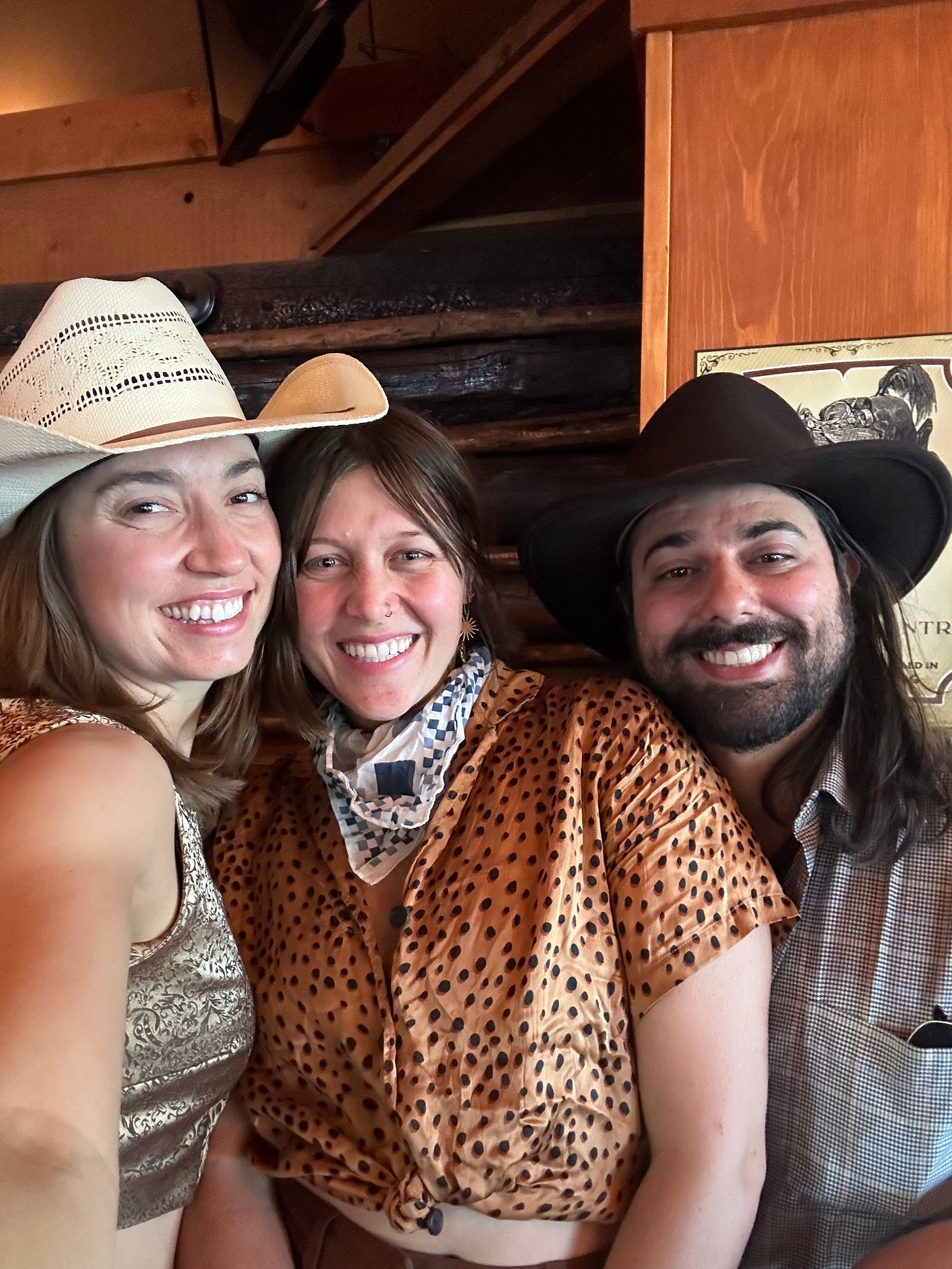

Great content! Are you implying Cam is a psychopath?